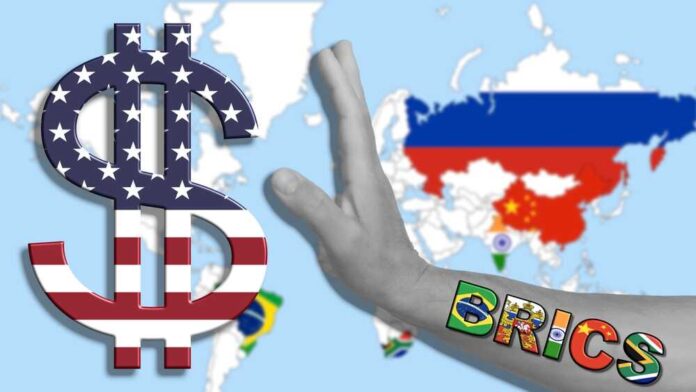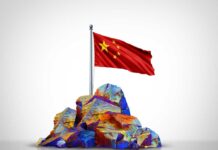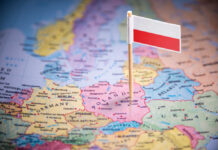
While America sleeps, BRICS nations are building their own financial system that could end the dollar’s dominance and Washington’s ability to weaponize the global economy against its enemies.
At a Glance
- BRICS Pay, introduced at the recent summit in Kazan, Russia, aims to directly challenge SWIFT’s global monopoly and reduce U.S. dollar dominance
- The system gained momentum after Western sanctions on Russia exposed vulnerabilities in the current global financial architecture
- The BRICS collective will soon include the UAE, Iran, and Saudi Arabia, representing about 28% of the global economy
- This alternative payment system could enable member countries to conduct trade in local currencies, bypassing the U.S. dollar entirely
- Despite still being in the feasibility study phase, BRICS Pay has already raised significant concerns in the Western world
America’s Financial Weapon Being Neutralized
For decades, the United States has wielded its financial system like a weapon, imposing its will on nations through sanctions, banking restrictions, and economic isolation. Now the BRICS nations—Brazil, Russia, India, China, and South Africa—are fighting back with an alternative payment system called BRICS Pay designed to bypass Western financial networks entirely. This isn’t just some theoretical concept being batted around in academic circles. It was formally introduced at the BRICS Plus Summit in Kazan, Russia, with the explicit goal of breaking SWIFT’s global monopoly and reducing American financial hegemony. And if you think this won’t affect everyday Americans, think again.
If successful, this system would effectively neutralize one of America’s most powerful geopolitical tools: its ability to cut off nations from the global financial system. When Russia invaded Ukraine, the West thought sanctioning them would bring their economy to its knees. Instead, it accelerated the very developments that might eventually render those sanctions toothless. Russia, faced with economic strangulation, doubled down on creating financial alternatives, and found willing partners in China, India, and other nations tired of dancing to Washington’s tune.
Dollar Dominance Under Siege
SWIFT, headquartered in Brussels and effectively controlled by Western interests, processes nearly 50 million payment messages daily, predominantly in U.S. dollars. This gives the United States unprecedented leverage over the global economy. By simply flipping a switch, Washington can cut off entire countries from international commerce, as they’ve done with Iran, North Korea, and more recently, Russia. But as the old saying goes, necessity is the mother of invention, and America’s financial bullying has forced targeted countries to get creative.
“We need to work so that the multipolar order we aim for is reflected in the international financial system,” said President Lula da Silva, expressing the frustration many BRICS nations feel with the current U.S.-dominated system.
The BRICS alliance is no longer a paper tiger. With new members UAE, Iran, and Saudi Arabia joining soon, they’ll represent approximately 28% of the global economy. More critically, the addition of major oil producers gives the bloc unprecedented leverage in global markets. If these nations begin trading oil in currencies other than the dollar, the petrodollar system that has underpinned American economic dominance since the 1970s could crumble faster than President Biden climbing a flight of stairs.
OH BOY 😱 ITS HAPPENING! 🚨
…The Financial Revolution…Saville Row seems to have hit the nail on the head once again 👀
China rails! BRICS? mBridge?
This is important for $VELO 👇China has fully-launched their RMB Digital Cross-Border Payment Network 🇨🇳… pic.twitter.com/fYXc5zB3MG
— 🇬🇧 ChartNerd 📊 (@ChartNerdTA) April 7, 2025
The Technology That Could Change Everything
BRICS Pay isn’t starting from scratch. It will leverage existing infrastructure like Russia’s Mir network, India’s UPI, and China’s WePay and AliPay. According to reports, the system may utilize blockchain technology for transparency and efficiency, potentially boosting digital currencies like China’s e-Yuan and India’s e-Rupee. This isn’t just about creating a SWIFT alternative—it’s about building an entirely new financial ecosystem outside of Western control, one that could eventually rival or even surpass the existing order.
“Promote the international financial system to better reflect changes in the world economic landscape,” stated President Xi Jinping, using typical Chinese diplomatic understatement to describe what amounts to a financial revolution.
The greatest challenge facing BRICS Pay remains unifying these diverse economies under a single system. Economic disparities between members make agreeing on a unified currency difficult, though not impossible. And while SWIFT’s vast network and the dollar’s reserve currency status won’t be overthrown overnight, the trend is unmistakable. The dollar’s share of allocated reserves has been gradually declining, indicating a shift toward alternative currencies. Our elected officials in Washington seem oblivious to this existential threat, too busy funding foreign wars and gender studies programs in Pakistan to notice the financial ground shifting beneath our feet.
The Coming Financial Earthquake
While American politicians squabble over pronouns and critical race theory, our adversaries are building the infrastructure to bypass our financial system entirely. The implications for everyday Americans are profound and terrifying. When countries no longer need dollars to trade with each other, demand for our currency will plummet. The Federal Reserve’s money-printing party, which has fueled our deficit spending addiction for decades, will come to a screeching halt when the world stops accepting our increasingly worthless paper.
BRICS Pay may still be in the feasibility study phase, but dismissing it as merely theoretical would be dangerously naive. The collective will and resources of nations representing nearly a third of the global economy should not be underestimated. While our leaders tell us to eat bugs and drive electric vehicles we can’t afford, our global competitors are methodically constructing the architecture of a new world order—one where America’s financial weapons have been neutralized and our economic dominance is nothing but a fading memory. The question isn’t if this will happen, but when—and whether we’ll wake up in time to prepare for the coming storm.

























